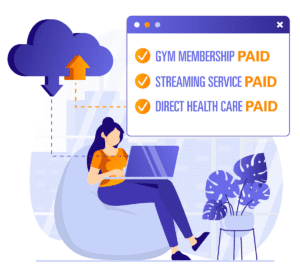Click here to access the PDF version of the policy brief.
 Policy Brief: Protect the Direct Health Care Model
Policy Brief: Protect the Direct Health Care Model
Tackling Alaska’s high healthcare costs requires a multifaceted approach, and one policy reform that will promote lower costs is protecting the direct health care model (DHC). This model is not health insurance or a cost-sharing group, and should be legally classified separately from health insurance.[1]
DHC is a contractual agreement between a patient and provider for health care services, similar to a gym membership or video streaming subscription. It eliminates the price-distorting influence of third parties like insurance companies and instead allows patients to pay a flat (typically monthly) fee for routine visits and contact with their provider, without concern about unforeseen bills.[2]
Not only does this system make health care more accessible for Alaskans, but it also lowers overall costs.[3] Doctors spend about half their working hours filling out paperwork for third-party insurance, leading to a 40% increase in overhead expenses and higher costs for patients.[4],[5] DHC arrangements eliminate the bureaucratic middle-men, resulting in decreased healthcare costs for those participating in direct care.
The patient-provider relationship is also strengthened when DHC providers spend most of their time with patients rather than on administrative tasks. This prevents expensive treatments and saves on costs. Studies have found that DHC patients visit emergency rooms less frequently, are admitted to hospitals less often, and need fewer healthcare services overall.[6] When a county in North Carolina offered their employees an option to receive DHC, total medical costs fell 23% and out-of-pocket spending decreased almost 50%.[7]
Lack of price transparency is one factor that keeps healthcare costs high in Alaska.[8] But direct care practices provide the real cost of services, not just estimates, to their patients because they don’t have to bother with insurance documentation, coding, and billing.
By protecting direct health care, Alaska can help make healthcare more accessible and affordable for Alaskans. This model eliminates the price-distorting influence of third parties, strengthens the patient-provider relationship, and increases access to quality care. Studies have shown that when DHC is offered, total medical costs and out-of-pocket spending decrease significantly. Protecting the direct health care model is an effective step in tackling the state’s high health care costs.
*****
Endnotes
[1] Wade Erickson and Peter M. Diemer. “Alaska Health Care Act 2023: Breaking Barriers Between Patients and Providers, An Introduction.” [Unpublished paper.] November 23, 2022.
[2] Sarah Montalbano. “Direct Care Increases Access and Transparency, Lowers Health Care Costs.” Alaska Policy Forum, May 14, 2021. https://alaskapolicyforum.org/2021/ 05/direct-care-lowers-health-care-costs/ (Accessed January 10, 2023).
[3] Darcy N. Bryan. “Benefits of Direct Primary Care in Improving Quality and Reducing Costs of Healthcare.” Testimony before the Montana Senate Committee on Business, Labor, and Economic Affairs, January 19, 2021. https://www.mercatus.org/research/ state-testimonies/benefits-direct-primary-care-improving-quality-and-reducing-costs (Accessed January 10, 2023).
[4] Ming Tai-Seal, et al. “Electronic Health Record Logs Indicate That Physicians Split Time Evenly Between Seeing Patients And Desktop Medicine.” Health Affairs, April 2017. https://www.healthaffairs.org/doi/full/10.1377/ hlthaff.2016.0811. (Accessed January 10, 2023).
[5] Phillip Eskew and Kathleen Klink. “Direct Primary Care: Practice Distribution and Cost across the Nation.” Journal of the American Board of Family Medicine: JABFM vol. 28,6 (2015): 793-801. doi:10.3122/jabfm.2015.06.140337. https://pubmed.ncbi.nlm.nih.gov/26546656/ (Accessed January 10, 2023).
[6] Fritz Busch, et al. “Direct Primary Care: Evaluating a New Model of Delivery and Financing.” Society of Actuaries, May 2020. https://www.soa.org/globalassets/assets/files/resources/research-report/2020/direct-primary-care-eval-model.pdf. (Accessed January 10, 2023).
[7] Katherine Restrepro and Julie Tisdale. “Direct Primary Care for Local Governments.” John Locke Foundation. https://www.johnlocke.org/wp-content/ uploads/2016/12/Spotlight-483-Direct-Primary-Care-for- Local-Government.pdf.(Accessed January 10, 2023).
[8] Benedic Ippolito. “Controlling Health Care Costs in Alaska.” Alaska Policy Forum, June 30, 2020. https:// alaskapolicyforum.org/2020/06/report-health-care- costs-alaska/. (Accessed January 10, 2023).

 Policy Brief: Protect the Direct Health Care Model
Policy Brief: Protect the Direct Health Care Model